LRTA 13000 class
The LRTA 13000 class is a class of fourth-generation high-floor light rail vehicles (LRV) of the LRT Line 1.
Purchased in 2017 with Japanese funding as part of the south extension of the line, the trains, manufactured by CAF, entered service in July 2023 to replace the aging first-generation 1000 class trains.
It is the first LRV in the system with 5 digits in the body number due to the class fleet exceeding 99 units, in comparison to the older fleet.
| LRTA 13000 class | |
|---|---|
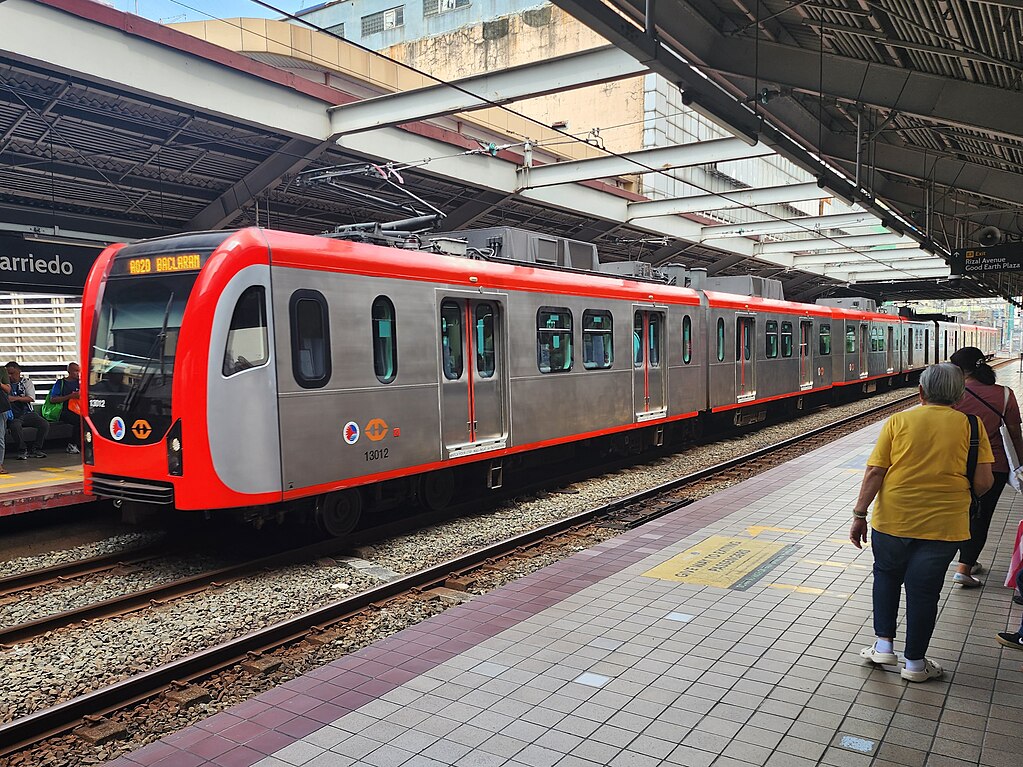
A 13000 class train arriving at Carriedo in October 2024

Interior of the 13000 class
|
|
| Stock type | Light rail vehicle |
| In service | 2023–present |
| Manufacturer | Construcciones y Auxiliar de Ferrocarriles |
| Assembled at |
Huehuetoca, Mexico
Corella, Spain |
| Designer | Mitsubishi Corporation |
| Family name | Urbos |
| Constructed | 2019–2022 |
| Entered service | July 20, 2023 |
| Number built | 120 vehicles (30 sets) |
| Number in service | 108 vehicles (27 sets) |
| Replaced | 1000 class |
| Formation | 4 cars per trainset (Mc–M–M–Mc) |
| Fleet numbers | 13001–13120 |
| Capacity |
1,388 passengers
(264 seats; 4 wheelchair spaces) |
| Operator(s) | Light Rail Manila Corporation (2023-present) |
| Depot(s) | Baclaran, Zapote (future) |
| Line(s) served | LRT Line 1 |
| Specifications | |
| Car body construction | Stainless steel |
| Train length | 106 m |
| Car length | 26.5 m[note 1] |
| Width | 2.59 m |
| Height |
From top of rail: 3.91 m
Pantograph locked down: 3.95 m |
| Floor height | 920 mm |
| Platform height | 690 mm |
| Entry | Step |
| Doors | 4 sets of 1,500 mm × 1,900 mm double-leaf pocket doors per side |
| Articulated sections | 2 per PRV |
| Wheel diameter |
New: 660 mm
Worn: 600 mm |
| Wheelbase |
Per bogie: 1.9 m
Bogie centers: 10 m Total: 20 m |
| Maximum speed |
Design: 70 km/h
Service: 60 km/h |
| Weight |
Driving car: 37.4 t
Intermediate car: 36.5 t |
| Axie load | 10.5 t |
| Steep gradient | 4% |
| Traction system | Mitsubishi Electric IGBT-VVVF |
| Traction motors | 4 × 105 kW 3-phase AC induction motor |
| Power output |
Per LRV: 420 kW
4-car trainset: 1.68 MW |
| Transmission |
Westinghouse-Natal (WN) drive
7.48 gear ratio; 2-stage reduction |
| Acceleration | 1 m/s² |
| Deceleration | 1.3 m/s² |
| Auxiliaries |
Static inverter
Low-power DC voltage supply Batteries |
| HVAC | Roof-mounted duct-type air conditioning (2 units per LRV) |
| Electric system(s) | 750 V DC overhead catenary |
| Current collector(s) | Schunk single-arm pantograph |
| UIC classification | Bo′+2′+Bo′ |
| Wheels driven | 8 out of 12 per LRV |
| Bogies | Inside-frame type |
| Minimum turning radius | 25 m |
| Breaking system(s) | Regenerative, rheostatic, and electro-pneumatic |
| Safety system(s) | Alstom Atlas 100 ATP |
| Coupling system | Semi-permanent |
| Multiple working | Within type |
| Seating | Longitudinal |
| Track gauge |
1,435 mm
Standard track gauge |
Purchased in 2017 with Japanese funding as part of the south extension of the line, the trains, manufactured by CAF, entered service in July 2023 to replace the aging first-generation 1000 class trains.
It is the first LRV in the system with 5 digits in the body number due to the class fleet exceeding 99 units, in comparison to the older fleet.
Purchase
In 2013, feasibility studies were conducted by the Japan International Cooperation Agency (JICA) for a southward extension of the LRT Line 1 to Cavite. It determined that once the extension was completed, sixty-one trains would be required for operation, but thirty-one of those are existing ones. Therefore, JICA proposed the purchase of thirty new trains to meet growing demand.On October 16, 2015, the Department of Transportation (DOTr) invited train manufacturers to tender for the purchase of 120 light rail vehicles; Japanese companies were only allowed to bid. It subsequently identified Marubeni and Sumitomo Corporation as prospective bidders. However, in April 2016, the DOTC announced a failed bidding as none of them submitted proposals.
On December 28, 2016, the Department of Transportation (DOTr), called for bids again. Two bidders showed up: Marubeni with Hyundai Rotem, and Mitsubishi Corporation with Construcciones y Auxiliar de Ferrocarriles (CAF). The latter won the ₱14.1 billion contract on November 19, 2017, and the contract was signed on December 1. These trains are expected to gradually replace the aging 1000 class which has been in use since the opening of the line in 1984 and has undergone three refurbishments.
Mitsubishi implemented the contract and supplied the trains while CAF manufactured the trains. The new trains were funded by Japan's official development assistance.
Production and commissioning
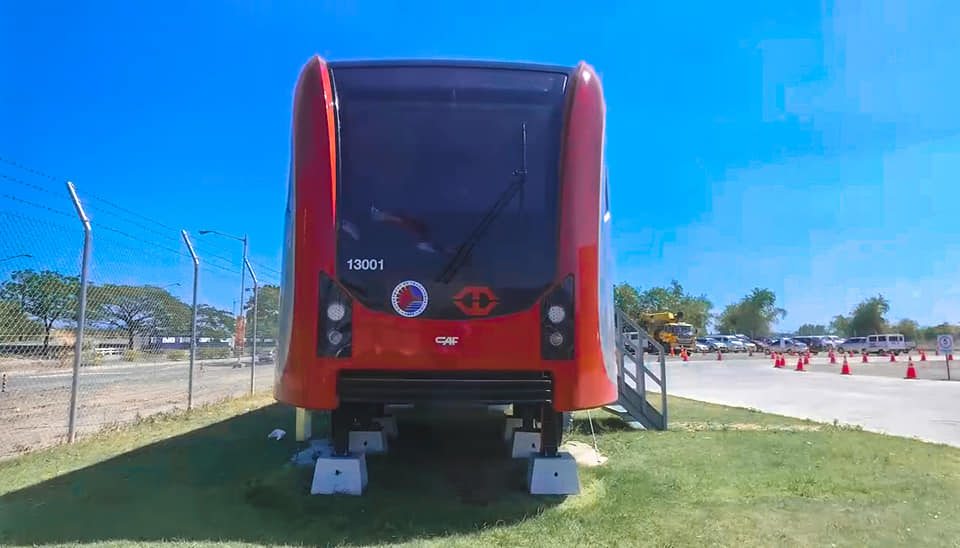
Mock-up model of the 13000 class
Officials of the Department of Transportation (DOTr) unveiled a full-scale mock-up model of the 13000 class train on May 7, 2019.
The first two sets (8 cars) were initially planned to be delivered in July 2020, however the delivery of the train sets were delayed due to the COVID-19 pandemic.
On January 18, 2021, the first batch of deliveries, consisting of the first trainset (4 cars consisting of two articulated cars each) arrived at the Port of Manila. These were unveiled to the public the following January 26. This trainset was then transported to Baclaran Depot in February.
The first trainset underwent static tests at the depot on September 15, 2021, followed by dynamic tests along the mainline on September 25. The trains then underwent 1,000-kilometer test runs conducted by the Light Rail Manila Corporation on May 4, 2022. Initially expected to enter in-service operations by the end of the month, the initial deadline was not met.
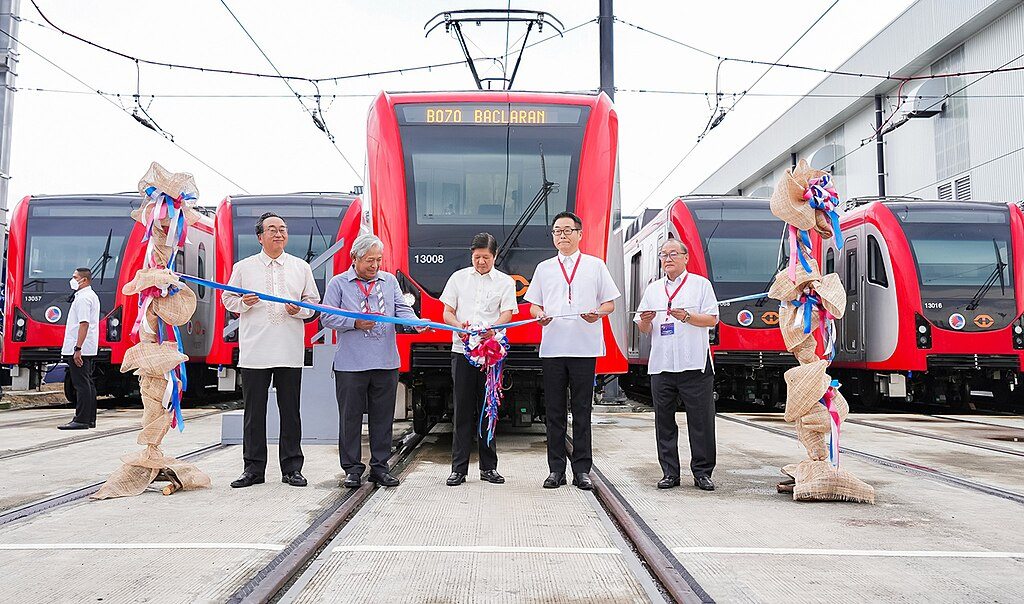
President Bongbong Marcos (center) leads the ribbon-cutting ceremony and inauguration of the 13000 class trains on July 19, 2023.
On July 19, 2023, the trains were inaugurated by President Bongbong Marcos. The first train set entered revenue service the next day. More trainsets from the 13000 class are expected to be incrementally entered into service, with one additional train set every week until every trainset enters service. All trains are expected to enter service by the fourth quarter of 2024, once the Cavite extension phase 1 is opened. As of December 23, 2024, 23 trainsets have been deployed for revenue service.
Water leaks
A few months before the trains entered service, Transportation Undersecretary for Railways Cesar Chavez disclosed on February 16, 2023, that water leaks were found in eighty LRVs that were delivered to the Philippines. He further disclosed that as a result, these could not be used in mainline operations, and the government suspended payments to Mitsubishi and CAF in July 2022.Chavez admitted that as a result of travel restrictions caused by the pandemic, the DOTr was unable to send inspection teams to inspect the trains for any defects, while these were still undergoing factory acceptance tests. These defects were later fixed through a comprehensive roof rectification plan.
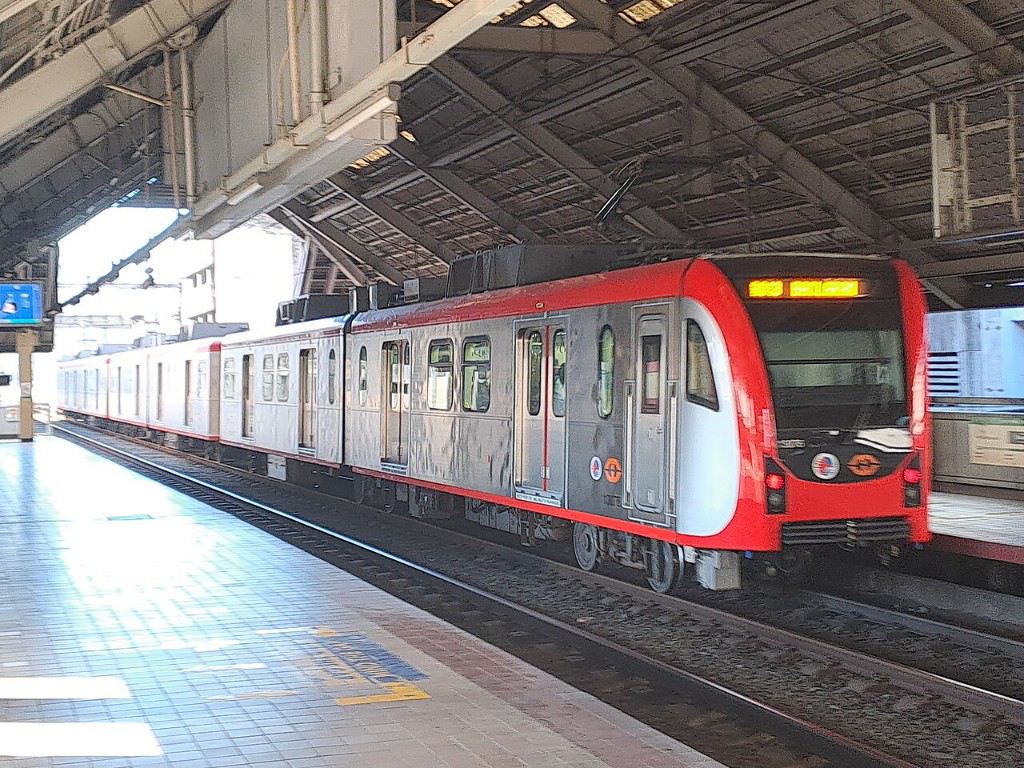
13000 class train at Doroteo Jose in February 2024
The 13000 class shares the 6-axle design present in the 1100 and 1200 class, consisting of two articulated cars. These are mainly operated in sets of four, and are capable of operating at a two- or three-car configuration under special circumstances.
Car body
The train car body is made of stainless steel. Each vehicle has four pocket doors per side. Initially, the trains were to sport a silver-yellow livery, but was changed to crimson and silver after the mock-up model was unveiled in 2019. The trains also feature LED destination panels, like the 1200 class.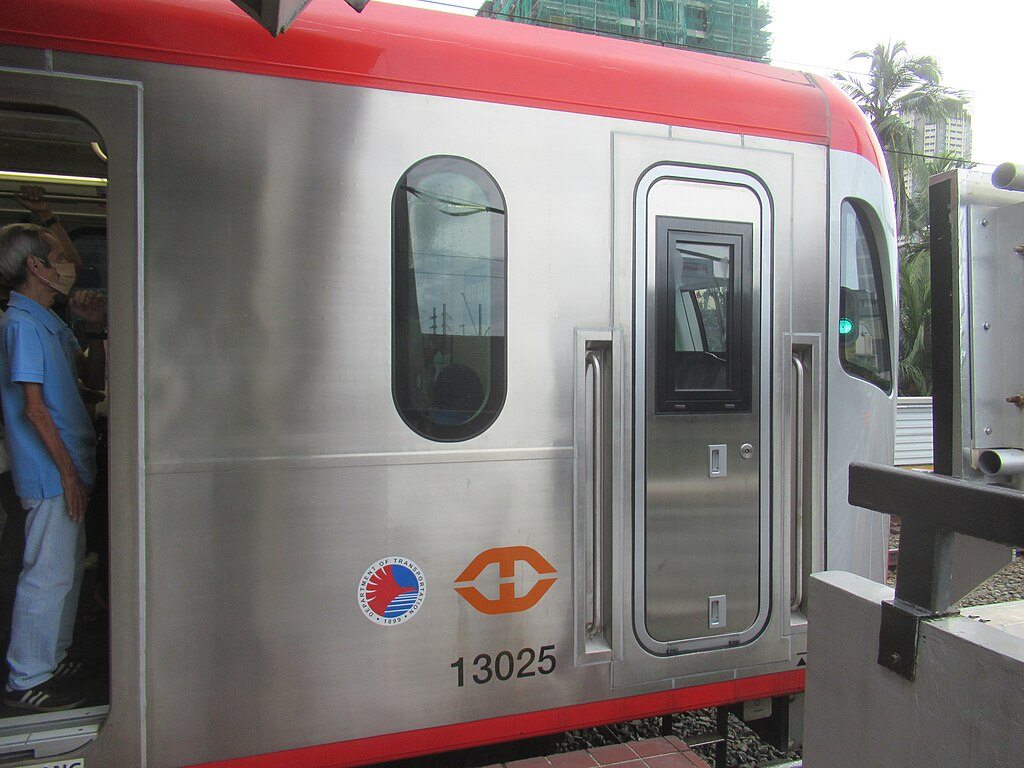
Driver's door at the front cab
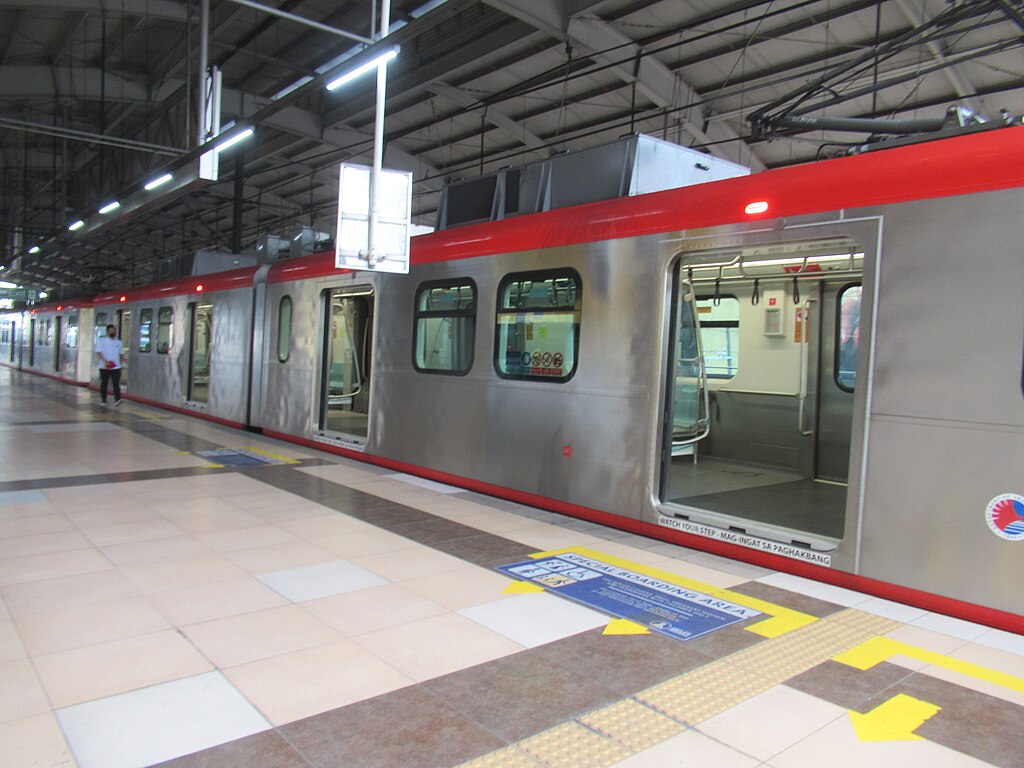
13000 class exterior
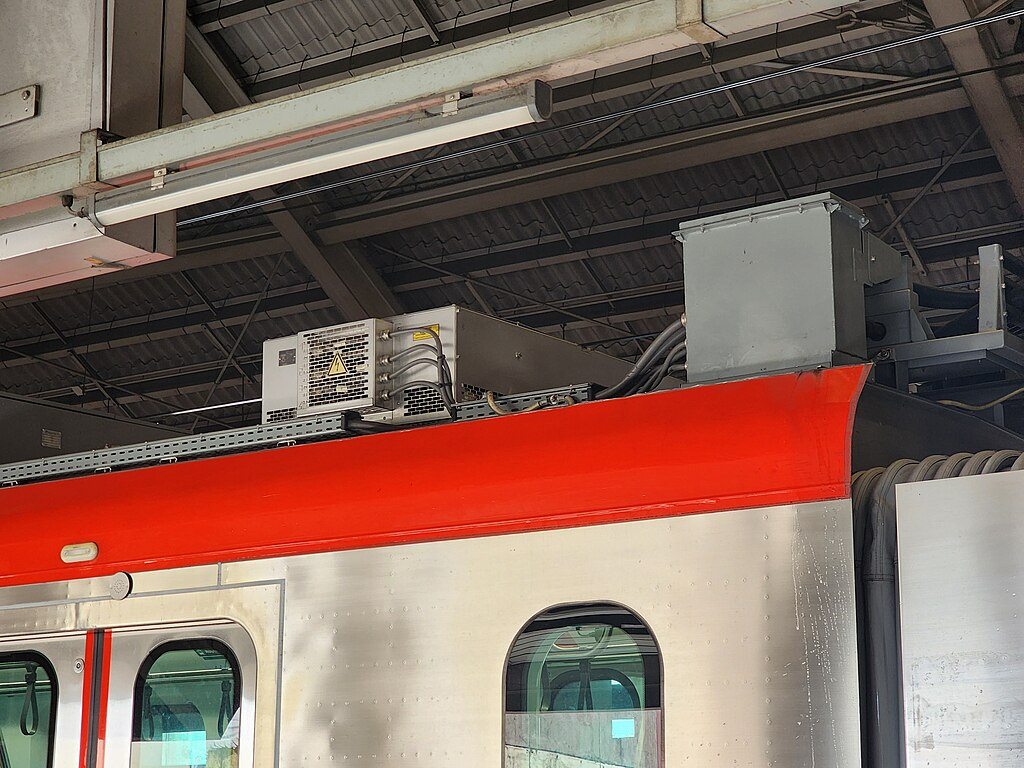
Roof-mounted resistor for regenerative braking
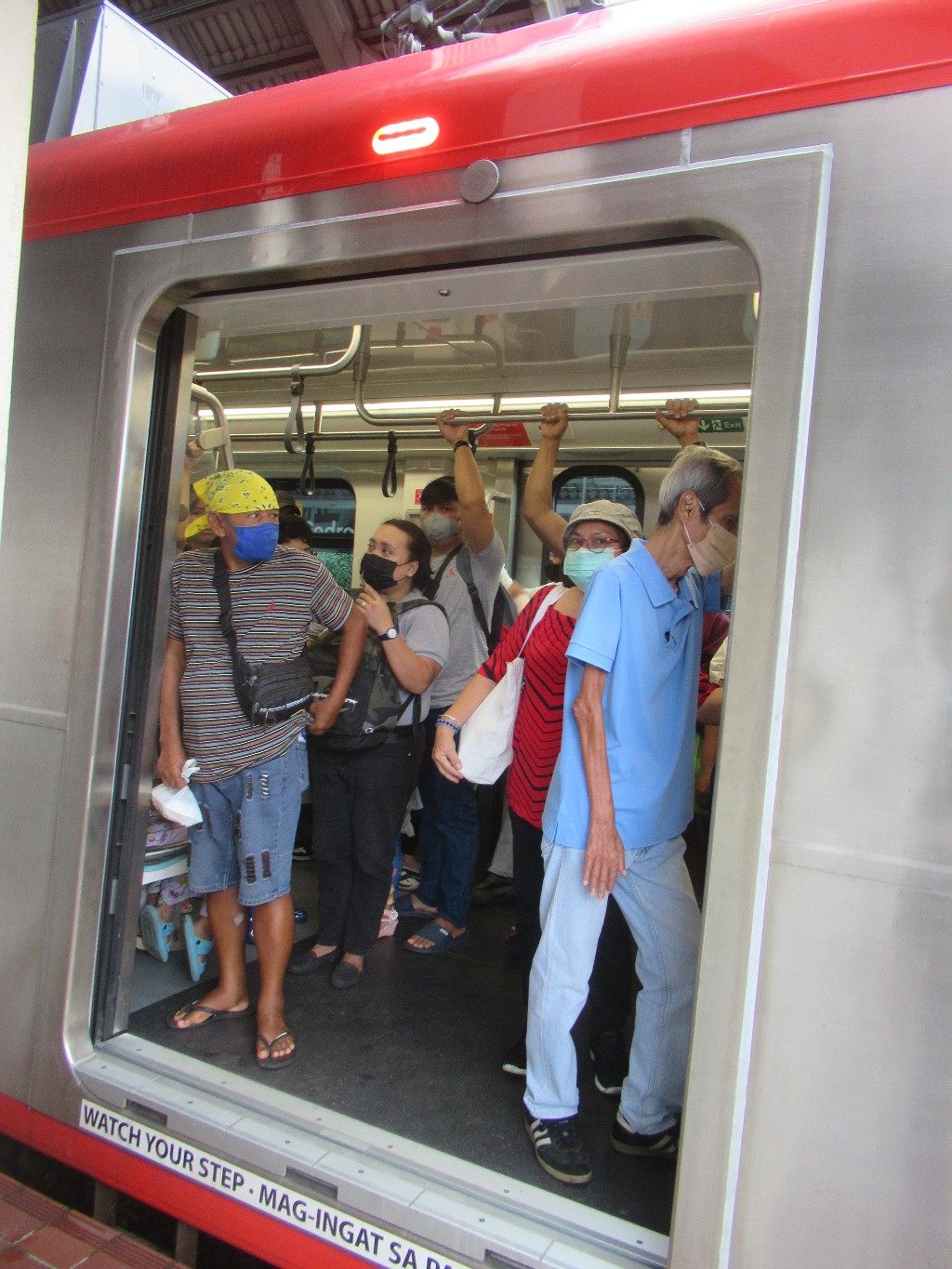
Light indicator above an open door of the 13000 class
Front cab variations
The fourth-generation trains vary in two frame colors. The first two sets (Trainsets 1 & 2), built in Spain, have a red-painted "forehead" above the windshield and LED sign, while sets 3 to 30, built in Mexico, received a black "forehead".Some train sets has varying signage data as well; train sets that arrived and/or were certified prior to the renaming of Roosevelt station to Fernando Poe Jr. station retained its destination signage. Later train sets feature the correct destination name which is noted to scroll instead of being static. All train sets had its signage data been updated in preparation for opening of the Cavite Extension Phase 1.

Front cab with black-painted "forehead"
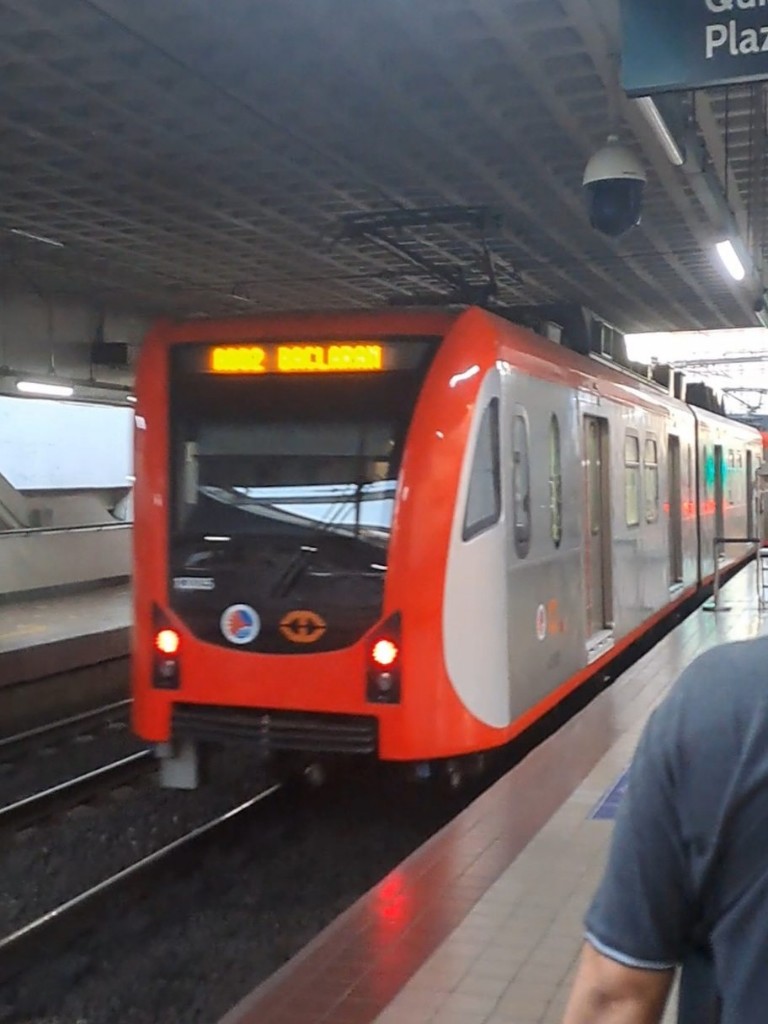
Front cab with red-painted "forehead"
Interior
As opposed to the older rolling stock, the 13000 class includes hand straps aside from safety handrails installed above the train floor.The trains are also the first in the Philippines to feature a specially-made wheelchair-compatible space or passenger with restricted mobility areas, located closer to the driver's cab as compared to the 1100 class and 1200 class where it is located near the articulation. Unlike the 1200 class, there are also fewer side handrails in the middle sections of each vehicle. Longitudinal seating is present in the 13000 class, as per other train classes in the system.
Like the 1100 class and 1200 class, there are four pocket-type doors per side per car. For the driving cars, one door is installed on the side of the driving cab.

Cab-end interior
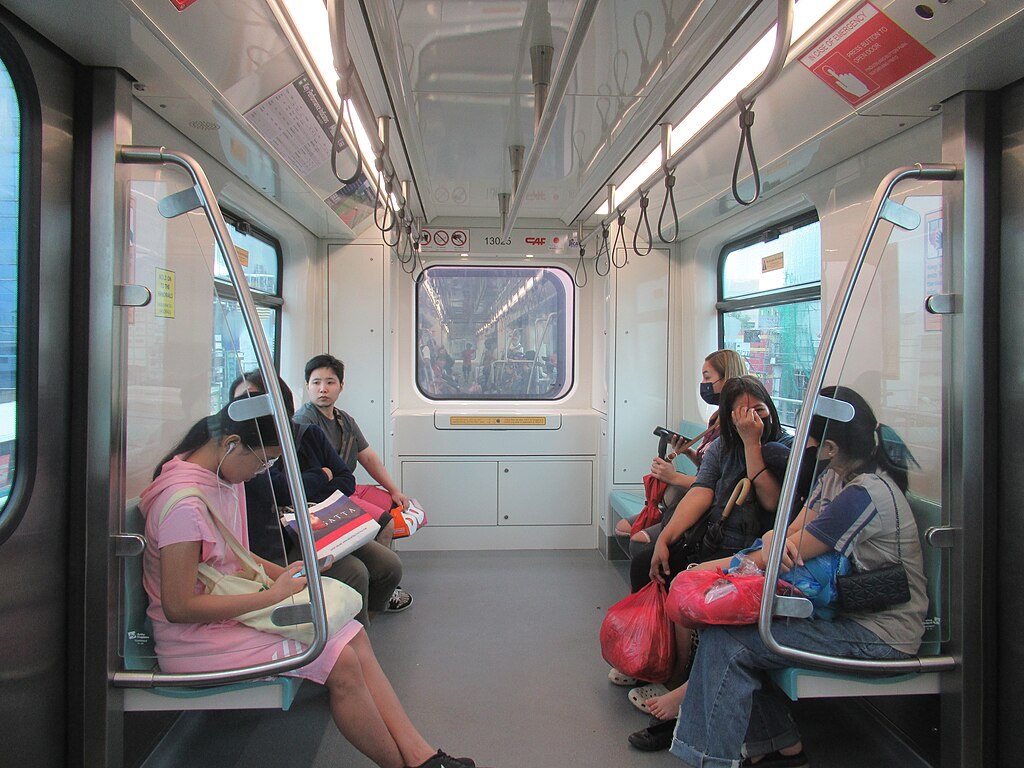
Non-cab end interior

Intercom
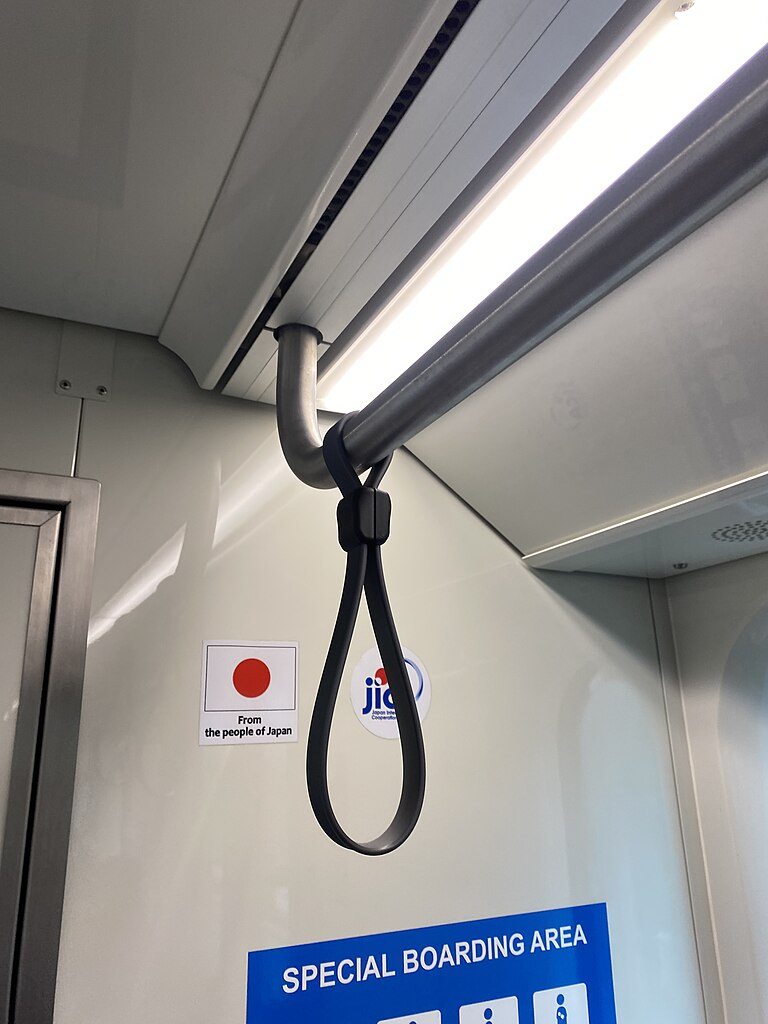
Hand straps
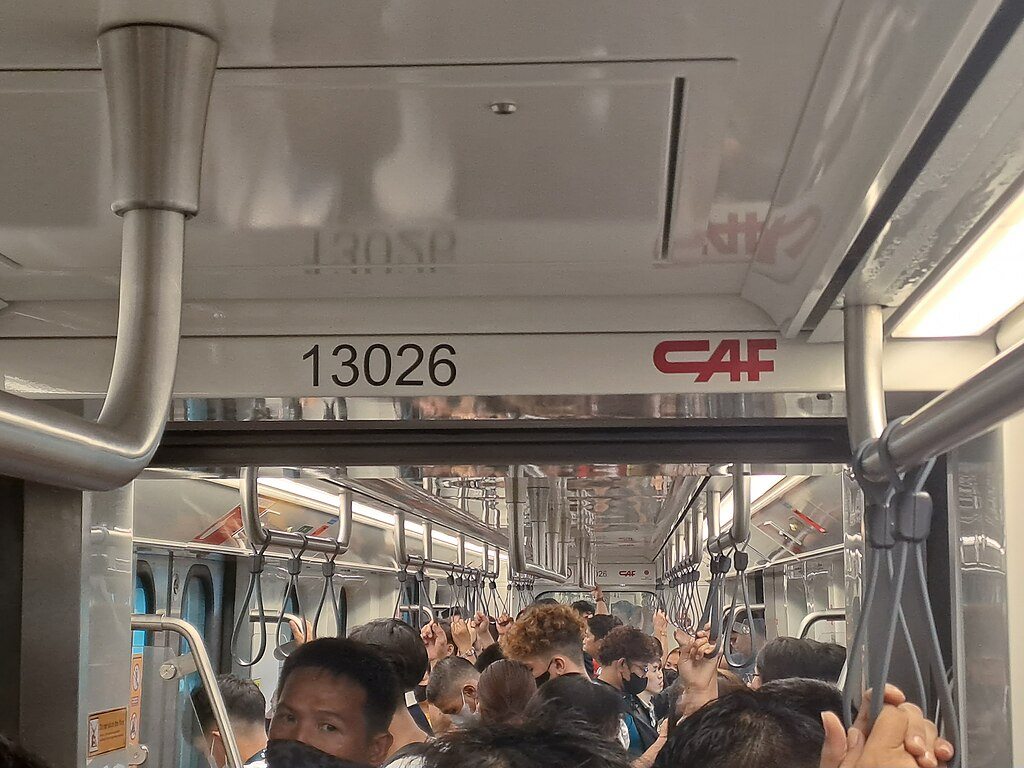
Car number and manufacturer's sticker above an open gangway
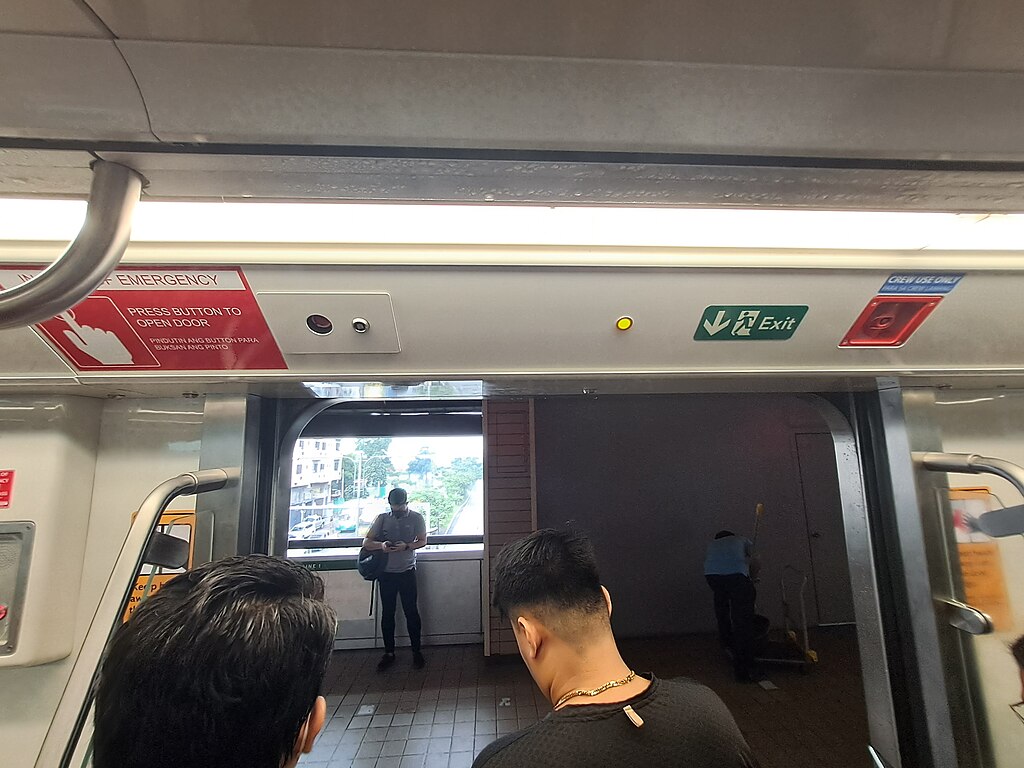
Interior of the door area
Electrical and mechanical
Each LRV has three inside-frame bogies consisting of two motorized bogies at the ends and a Jacobs trailer bogie under the articulation. Semi-permanent couplers are installed at the ends of every light rail vehicle, except for the driving cab section of the head car.These trains are easily recognizable by their distinctive braking sounds, which produce a screeching noise when stopping. This trait was not present in earlier train class sets, even when they were first introduced.
Like the 1100 class and 1200 class, each LRV consists of four 105-kilowatt 3-phase AC induction motors, driven by variable-voltage/variable-frequency drive (VVVF) inverters with insulated-gate bipolar transistors (IGBT). Auxiliary power is sourced from a static inverter, a low-power DC voltage supply, and batteries.
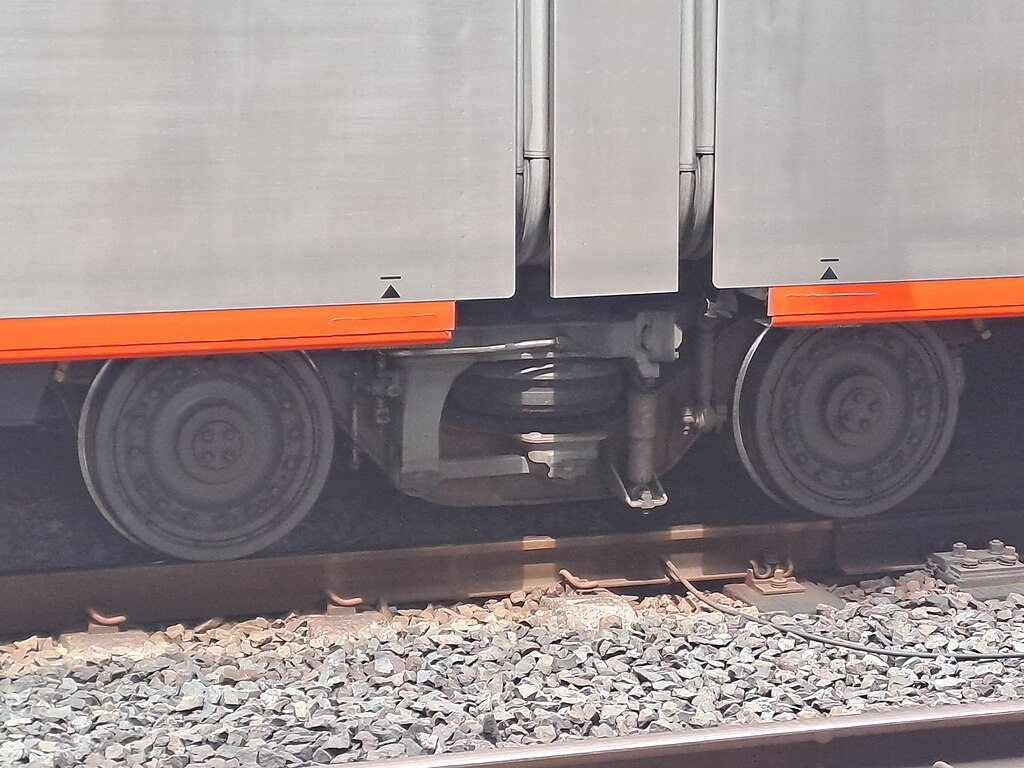
Jacobs trailer bogie
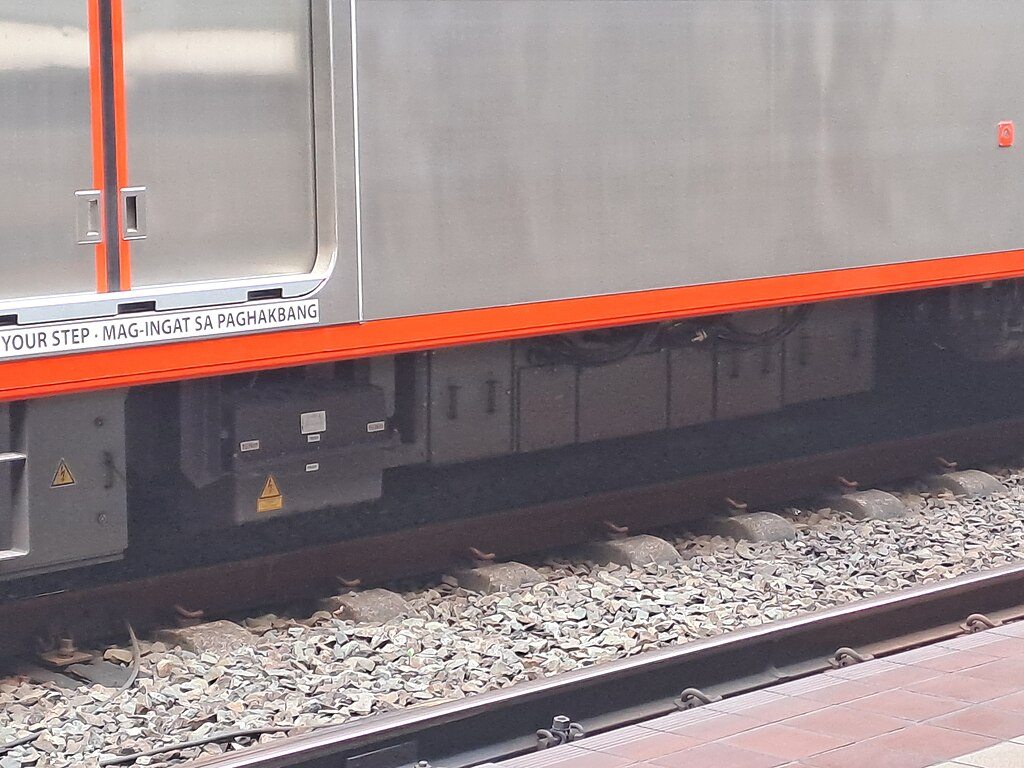
VVVF inverter
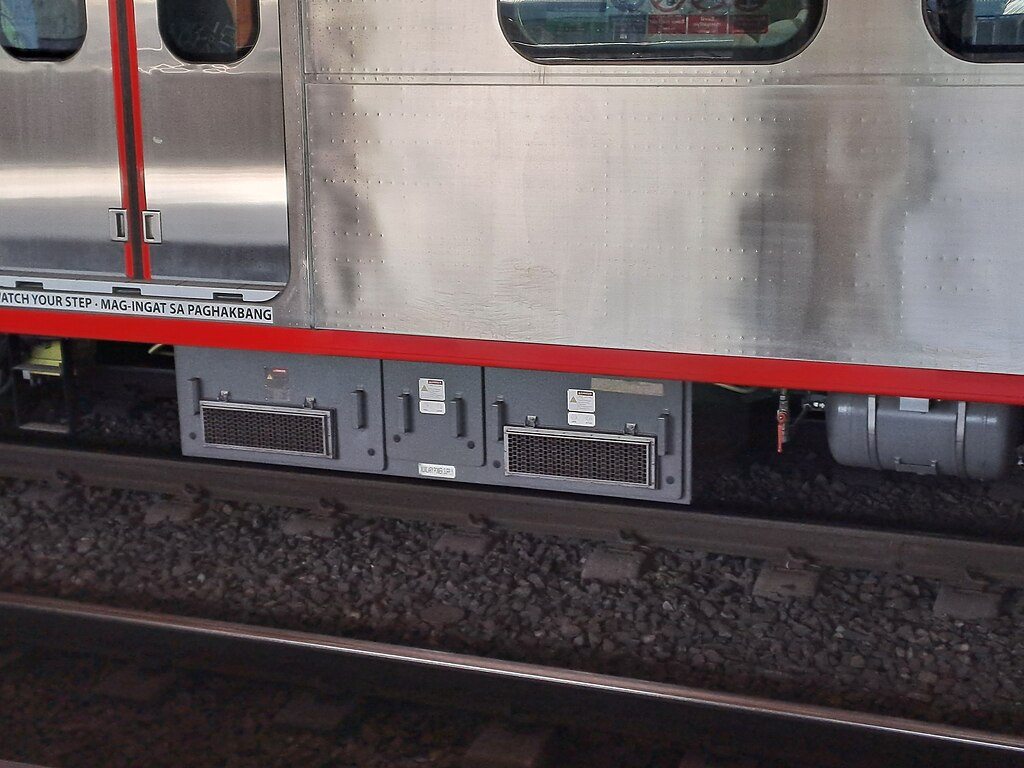
Auxiliary Power Supply

Schunk pantograph
Signaling and control systems
The trains are equipped with the automatic train protection (ATP) system. Alstom was awarded the signaling and communications contract for the south extension of the LRT Line 1 in 2016. The contractual scope included the upgrading of the signaling system and the installation of the Atlas 100 on-board signaling solution for 60 train sets across the existing three generations of trains and the 13000 class trains.The trains are also equipped with a Train Control and Monitoring System (TCMS).
The configuration of a four-car trainset is Mc–M–M–Mc. Mc denotes a driving car while M denotes an intermediate car.
| Car type | Mc | M | |||
|---|---|---|---|---|---|
| A | B | A | B | ||
| Quantity | 2 | 2 | |||
| Control cab | Yes | No | No | No | |
| VVVF inverter | Yes | Yes | Yes | Yes | |
| Auxiliary inverter | Yes | Yes | Yes | Yes | |
| Pantograph | Yes | No | Yes | No | |
| Wheelchair spaces | Yes | No | Yes | No | |
| Car length | 26.35 m | 26.5 m | |||
| Capacity | Seated | 66 | 68 | ||
| Standing | 272 | 286 | |||
| Wheelchair spaces | 2 | 2 | |||
| Total | 340 | 356 | |||
Legend
| In service |
| Set no. | 1 | 2 | 3 | 4 | Manufactured in | Service started on |
|---|---|---|---|---|---|---|
| 1 | 13001 | 13002 | 13003 | 13004 | Spain | September 1, 2023 |
| 2 | 13005 | 13006 | 13007 | 13008 | August 30, 2023 | |
| 3 | 13009 | 13010 | 13011 | 13012 | Mexico | October 13, 2023 |
| 4 | 13013 | 13014 | 13015 | 13016 | Mexico | December 22, 2024 |
| 5 | 13017 | 13018 | 13019 | 13020 | Mexico | September 25, 2023 |
| 6 | 13021 | 13022 | 13023 | 13024 | Mexico | September 26, 2023 |
| 7 | 13025 | 13026 | 13027 | 13028 | Mexico | July 20, 2023 |
| 8 | 13029 | 13030 | 13031 | 13032 | Mexico | October 13, 2023 |
| 9 | 13033 | 13034 | 13035 | 13036 | Mexico | December 20, 2024 |
| 10 | 13037 | 13038 | 13039 | 13040 | Mexico | February 10, 2025 |
| 11 | 13041 | 13042 | 13043 | 13044 | Mexico | February 23, 2024 |
| 12 | 13045 | 13046 | 13047 | 13048 | Mexico | October 28, 2023 |
| 13 | 13049 | 13050 | 13051 | 13052 | Mexico | September 1, 2023 |
| 14 | 13053 | 13054 | 13055 | 13056 | Mexico | February 27, 2024 |
| 15 | 13057 | 13058 | 13059 | 13060 | Mexico | September 15, 2023 |
| 16 | 13061 | 13062 | 13063 | 13064 | Mexico | November 11, 2023 |
| 17 | 13065 | 13066 | 13067 | 13068 | Mexico | November 11, 2023 |
| 18 | 13069 | 13070 | 13071 | 13072 | Mexico | November 28, 2023 |
| 19 | 13073 | 13074 | 13075 | 13076 | Mexico | November 28, 2023 |
| 20 | 13077 | 13078 | 13079 | 13080 | Mexico | January 17, 2024 |
| 21 | 13081 | 13082 | 13083 | 13084 | Mexico | December 13, 2023 |
| 22 | 13085 | 13086 | 13087 | 13088 | Mexico | December 28, 2023 |
| 23 | 13089 | 13090 | 13091 | 13092 | Mexico | December 20, 2024 |
| 24 | 13093 | 13094 | 13095 | 13096 | Mexico | April 4, 2025 |
| 25 | 13097 | 13098 | 13099 | 13100 | Mexico | April 28, 2025 |
| 26 | 13101 | 13102 | 13103 | 13104 | Mexico | April 7, 2025 |
| 27 | 13105 | 13106 | 13107 | 13108 | Mexico | April 8, 2025 |
| 28 | 13109 | 13110 | 13111 | 13112 | Mexico | |
| 29 | 13113 | 13114 | 13115 | 13116 | Mexico | |
| 30 | 13117 | 13118 | 13119 | 13120 | Mexico |
- On September 17, 2023, at 2:41 PM, a 4th generation trainset encountered a catenary fault issue at Balintawak station southbound, causing partial disruptions between Baclaran and Monumento stations. Full operations were restored the next day.
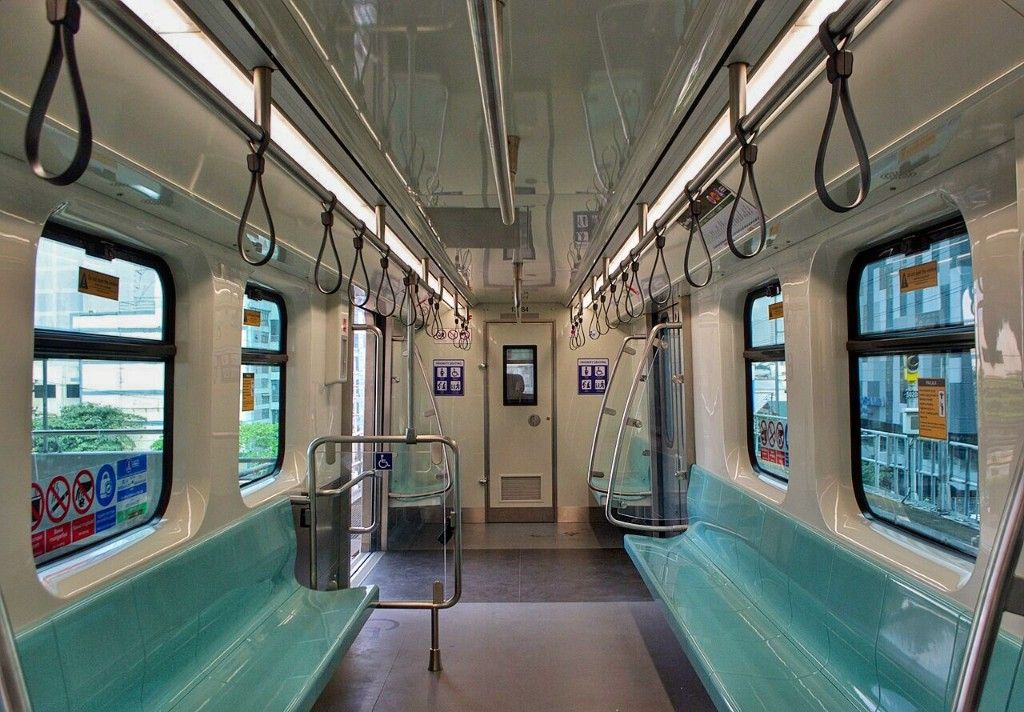
Rear cab interior of the train captured in February 2024
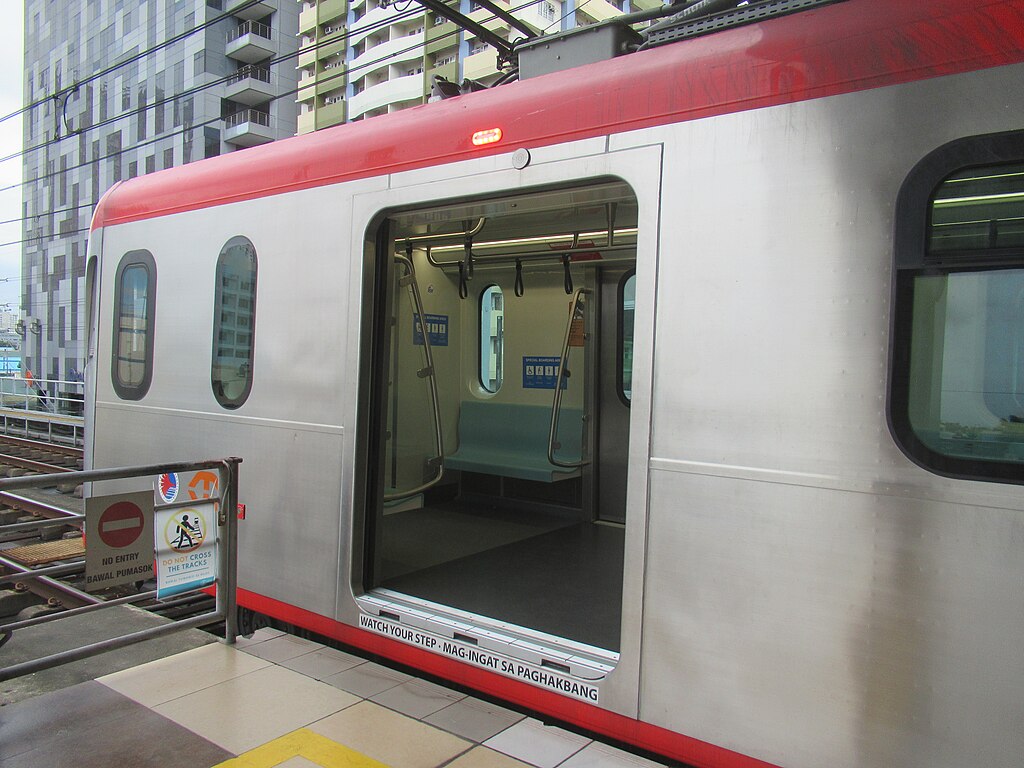
End cab with doors opened of 13000 class

A pair of two LRT-1 4G trains taken near the National Museum of Fine Arts
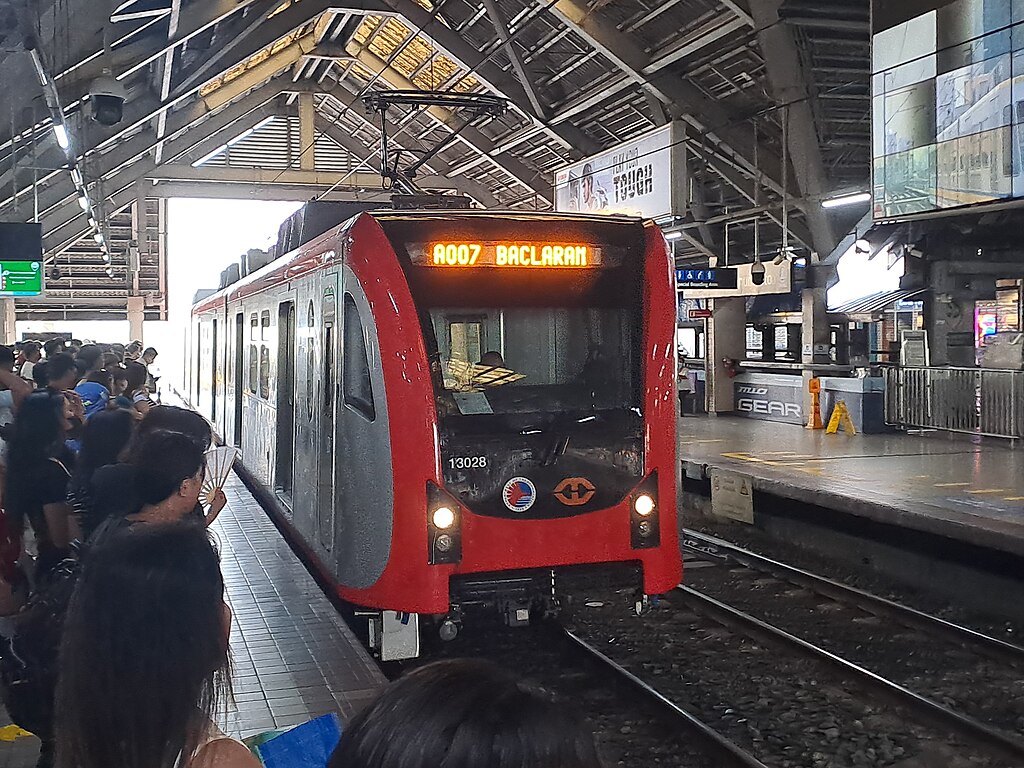
A train approching Monumento station in August 2023
- ^ Length with anti-climbers/couplers. Without the anti-climbers and couplers, the car length is 26 meters